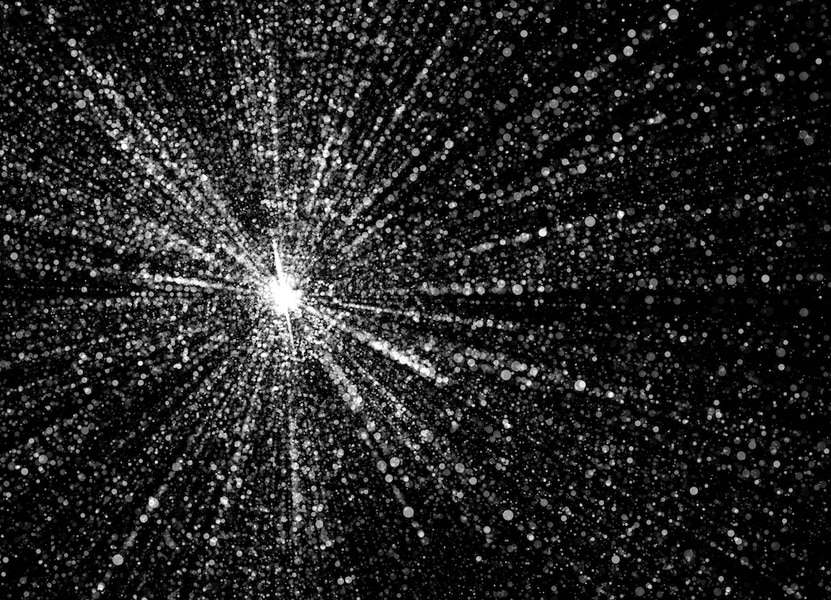What Is Gamma Radiation? The Science Behind The Hulk
There are safer ways to get superpowers.

Back in 2003, five years before Iron Man would officially kick off the MCU, viewers got their first look at the Hulk in a live action theatrical feature. A joint project between Universal and Marvel, Hulk (streaming now on Peacock) was directed by Ang Lee, and starred Eric Bana as the titular hero and his human alter ego, Bruce Banner.
It opens on geneticist David Banner’s experiments to alter and “improve” human DNA. Lacking the necessary approvals for human testing, Banner experiments on himself and unwittingly passes a mutation to his son, Bruce. Three decades later, Bruce Banner is working at Berkeley when he is exposed to high levels of gamma radiation during a laboratory accident. The excess energy, when combined with his mutant DNA, transforms Bruce into a giant green rage monster every time he gets angry.
Stan Lee famously cared more about the feeling of his worlds than their scientific accuracy. He wasn’t particularly scientifically literate, something he was open about in interviews during his life, but he knew how to make something pop on the page. “When I did the Fantastic Four … I wanted to give them super powers but I didn't want them coming from another planet. So I figured, well, I'll have them go up in a rocket ship and they're hit by cosmic rays. ... Then I needed something to make the Hulk the Hulk, so I said well I'll have him hit by gamma rays. So he was the victim of a gamma-ray explosion. I know less about gamma rays than cosmic rays. But again, it sounds good,” Lee told Today in 2006.
In the Marvel multiverse, gamma rays can produce whatever effects you need them to; they can create abominations or founding members of the Avengers, and everything in between. In the real world, however…
What is gamma radiation?
Real-world gamma rays won’t give you superpowers, but there is something otherworldly about them. Namely, that they mostly come from elsewhere in the cosmos. From another point of view, gamma rays are as ordinary as the ground beneath your feet.
All radiation exists somewhere along the electromagnetic spectrum. Figuring out where a particular packet of radiation belongs on the spectrum depends on its frequency and wavelength. At one end of the scale, you’ll find large wavelength radiation like radio, microwave, and infrared. At slightly smaller wavelengths, radiation falls into the visible light range. Our eyes (and our optical telescopes) detect differences in the frequency of visible light as change in color, from red to violet.
As wavelengths get smaller, we reach ultraviolet light which is invisible to us but is visible to some other species. Lastly, we have X-rays and gamma rays, both forms of high-frequency ionizing radiation. We call it “ionizing” because the particles are energetic enough to knock electrons free from their atoms. If that happens a little bit throughout your life, like during a medical X-ray, it’s not a big deal. Your body has mechanisms for repairing regular cellular wear and tear. If it happens a lot, however, like during a nuclear accident, ionizing radiation can cause fatal damage to the body.
Gamma rays are pure energy, like the photons which make up visible light, but way stronger. They carry so much energy that they can cut right through several feet of concrete or several inches of solid lead. Fortunately, the Earth’s atmosphere protects us from most cosmic gamma radiation. In fact, we only really knew about cosmic gamma radiation once we developed high-altitude balloons and rockets for launching instruments above most of the atmosphere.
On Earth, relatively small amounts of gamma are created by ordinary radioactive decay, the explosion of nuclear weapons, and in lightning strikes. Farther afield, gamma is formed inside stars, during supernova explosions, in neutron stars and pulsars, and in the accretion disks around black holes. Every once in a while, for reasons which still aren’t wholly understood, astronomers see a magnificent gamma ray burst (GRB), the most energetic explosions in history (other than the Big Bang, itself). Some of these release more energy in a moment than the Sun will release in its entire existence.
Detecting and Using Gamma Radiation
The wavelength of gamma radiation is so small that it can pass right through an atom without interacting, like a bumblebee flying in one sleeve and out the other without touching your body. Detecting them requires special instruments filled with dense crystal blocks.
When gamma flows through the sensor, some percentage of its particles will interact with an electron, and the dense composition of the crystal blocks make those interactions more likely to occur. The instrument can’t actually detect the radiation itself, but it can see the charged particles it creates.
Generally speaking, you want to keep as far from gamma rays as possible, but they can be useful when used safely and appropriately. Astronomers use gamma ray spectrometers to figure out what distant objects are made of. When cosmic rays hit the surface of distant planets, they interact and spit additional gamma rays. The precise nature of those rays depends on the surface materials they interact with, allowing astronomers to map alien worlds from their radiation signatures. Likewise, astronomers have used gamma radiation to map the Milky Way galaxy, by imaging the brief but intense flashes of supernovas, pulsars, and active black holes.
Closer to home, gamma is used to treat certain forms of cancer by selectively destroying tumor cells. The challenge is in attacking the cancer without destroying all of the healthy tissues along the way. One way doctors get around this problem is by using an array of lasers to fire on an area from multiple angles. Each individual gamma laser doesn’t do much damage, so there’s little risk to healthy tissues, but they all converge on the tumor where their combined energies get to work. The only “hulk smashing” going on is at the cellular level.
Catch Ang Lee’s Hulk, streaming now on Peacock.






























